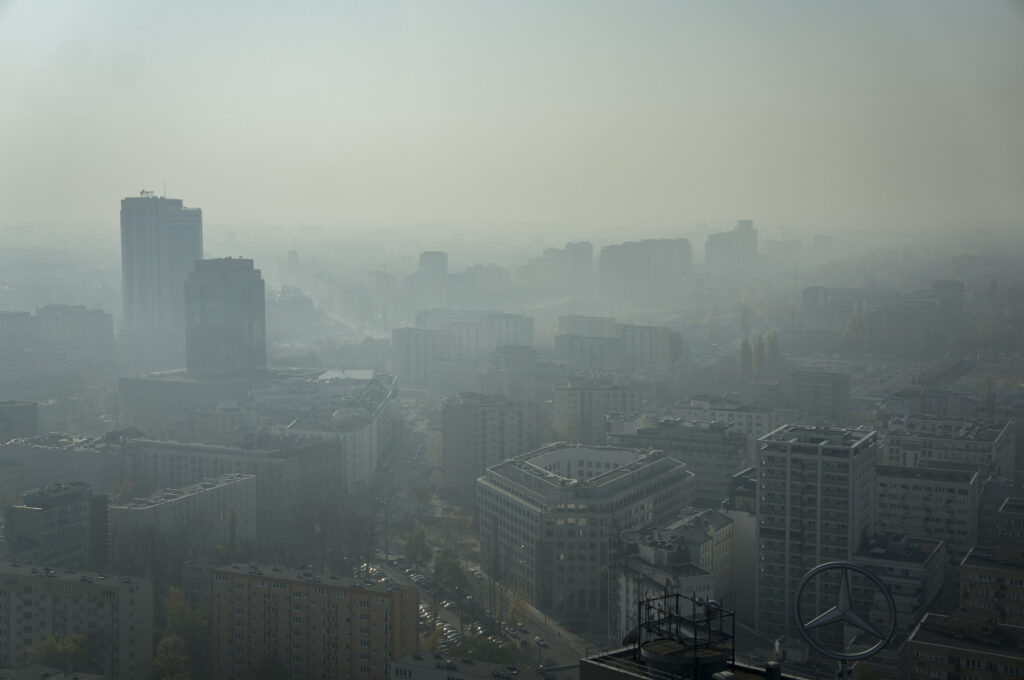Thomas Verbeek and Calvin Jephcote, Department of Sociology, University of Warwick
Air pollution is increasingly seen as a major public health issue, with new research outputs covered by international organisations and the national media every few weeks. The World Health Organisation (WHO) states that “clean air is a basic requirement of human health and well-being”. While the relationship between day-to-day exposure and cardiorespiratory conditions is firmly established, the effect of air pollution is far wider reaching, with emerging research demonstrating that exposure to air pollution harms cognitive performance. This has reignited the public debate and led to renewed calls for tackling the air pollution problem in our cities.
In media coverage and public debate, numbers are an important means to convey a message and increase the awareness of air pollution. They can help to get an idea of the scale of the problem and make it more tangible. A good example is the highly cited 2015 Nature article, which claims that outdoor air pollution causes more than 3m premature deaths a year, being the biggest single killer in the world (Lelieveld et al., 2015). However, in the context of air pollution, numbers and data are mainly used to quantify exposure levels in response to (legal) limit values, or to compare air quality across different cities and countries.
While numbers and data are more and more readily available, at increasingly higher resolutions, they are also increasingly questioned by those not involved in data production. Citizens often distrust government data, politicians sometimes ridicule scientists, and measurements by citizens are in many cases not valued at all. The level of distrust was elevated following the modelling inaccuracies of major American and European projects, which evaluated the temporal burdens of air pollution within multiple urban locations. For instance, the ‘National Morbidity and Mortality Air Pollution Study’ (NMMAPS) of 90 US cities, originally associated a 0.41% increase in mortalities per 10μg/m3 of PM10; yet in the reanalysis under more stringent conditions the estimate fell to 0.21%.
While distrusting or ridiculing data may have strategic and political motivations (e.g. to downplay the seriousness of a problem), it also stresses the ambiguity and bias of any kind of indicator, measuring method or air quality standard. There is not one correct and objective way of measuring, monitoring and analysing a complex issue such as air pollution. Instead, evidence is always problematic, not a matter of simple fact and truth, but produced through social processes. In every quantitative analysis methodological choice is involved in shaping the scope and form of the evidence claims that can be made, and the knowledge that is generated and not generated (Walker, 2012).
Apart from measuring or monitoring the exact exposure values at a specific location or for a specific person, the pathways to health effects are even more complex and the individual risk almost impossible to quantify. There is continuing disagreement about the possibility of defining safe exposure levels to air pollution, with no evidence available about an acceptable concentration level at which there will be no adverse effects (Beelen et al., 2014). This also means that the standards we work with today do not really reflect health concerns, these are rather the result of political negotiations and strategies. This is clearly seen in the big difference between well-known limit values, such as the EU Air Quality Standards and the WHO guidelines. While the EU currently works with a maximum average annual exposure limit of 20 µg/m3 for PM2.5, the WHO advises a threshold of only 10 µg/m3.

In this Toxic News issue, we explore the role of data, indicators and quantitative analyses in today’s global air pollution problem. The different contributions show how the way we measure, monitor and analyse air pollution has a big impact on how the problem is perceived, framed and tackled.
The opening article (Emma Garnett) deals with the elemental ambiguity of PM2.5, one of the most important indicators to measure and monitor air pollution. Emma shows how the choice of indicator and measurement affects our understanding of the world and framing of the problem.
The second article (Nic da Schio) focuses on new ways of collaborative research and collaborative measuring of air pollution. This coproduction of knowledge would not only lead to a different research focus and other indicators, aligning with citizens’ daily concerns. The process itself could also lead to growing awareness and understanding and an alliance between researchers and citizens.
The importance of collecting data and measuring air pollution is maybe never as clear as in the third article (Samuel Agyei-Mensah, Ayaga A. Bawah and Elvis Kyere Gyeabour), which presents an account of a data-poor region. It shows the role of data and monitoring in agenda setting and defining a problem, because when there is no data, there is no problem. In a way, the article forms a plea to invest in data collection in developing countries so that the problem may be recognised.
The fourth contribution (Calvin Jephcote) broadens the scope of quantitative analysis by not only focusing on measuring pollution, but also including socio-economic variables and ethical principles (i.e. polluter pays). By combining these different kinds of variables, the aspect of environmental justice enters the discussion.
In the final article (Heike Köckler) the complexity of environmental health and policymaking is narrowed down to a framework with a selection of straightforward indicators, combining environmental burdens and socio-economic vulnerability. It simplifies reality to support decision-making, but at the same time it puts a very high responsibility on the people who decide on which indicators count, how they are measured and how they are combined.
We conclude with a list of emerging environmental health data sources, compiled by Jon Fairburn.
(Featured Image: Warsaw smog, R. Kolakowski – Flickr)
